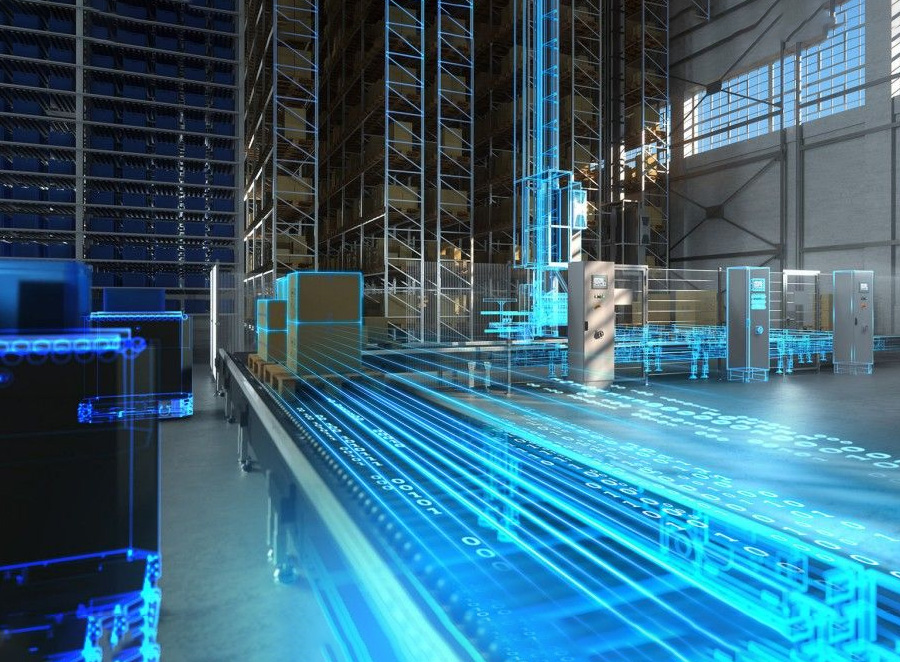The rising demand for precise, efficient, and flexible supply chain operations is quite evident in the industry and cannot be denied that it is the most prominent factor for the growth of the industry. Supply chains today will have to adapt to larger, more complicated ways of information and product transit as consumer and client bases continue to grow at a rapid pace. However, running an efficient supply chain involves several time-consuming operations. Research suggests that 47% of management, retail, and logistics specialists have already invested in warehouse automation. Rising online retailer demand has also had an influence on the automation trend. According to a recent poll, firms expect e-commerce to account for half of all sales in 2023, up from approximately one-third than it was in 2022.
KEY TAKEAWAYS
- The process involved in supply chain management
- Basic stages involved in supply chain management
- Introduction of automation in supply chain management
- Automation in supply chain management solutions
- Robotics and Customer Service
- How to keep supply chain management safe
- Maintaining shipping demands
- Conclusion

The process involves supply chain management
Structuring: The first stage in carrying out a set of activities and procedures is to plan and organise them. It is critical to set rules and regulations in order to complete the supply chain and accomplish the indicated goals. Whether the business is planning for its own supply chain operations or if it is a 3pl management and logistics company in India, structuring the operations beforehand is always a good option. 56% of retail establishments said that the pandemic caused some disruption. You may be wondering if your company can stay up with the present economic and technology improvements. However, pre-pandemic perceptions were rather different.
According to GEODIS, 57% of firms believe that supply chain management provides them with a competitive edge that allows them to grow their operations in 2019. According to most industry analysts, the supply chain will likely play a key role in enhancing customer service by the end of 2020, according to Accenture in 2018.
Delivery: It refers to all of the activities required in getting a product to a consumer, from order coordination through timetabling, distribution, and billing. According to the 2017 GEODIS research, 74% of supply chain organisations employ four or more modes of transportation. Air freight and full truckloads on the road are examples.
Return: It is based on recovering surplus, undesirable, and damaged items in order to enhance or, in the event of surplus, return them to warehouses.
Framework: It covers all of the additional procedures that allow for supply chain information monitoring. Finance, human resources, information technology, facilities, portfolio management, product design, sales, and quality control are just a few examples. According to Reuters 2018 statistics, the factors of a growth in supply chain investment in 2018 were cost reduction (25%), SCM automation (25%), and market expansion (23.7%). The following most popular areas were data and analytics (6.6%), customer service (4%), employing new personnel (4%), eCommerce (2.6%), direct-to-consumer sales (2.6%), and mobile-enabled customers (1.3%).
Benefits of Automation in Supply Chain
Automation is a foundation of the Supply Chain 4.0 idea, along with machine learning and artificial intelligence (i.e., the next-generation digital supply chain). These developments are being driven by advancements in both hardware and software to help in the handling and transportation of products, such as highly efficient sophisticated robots in warehouses, intelligent predictive analytics, and the internet of things. Priorities previous to the epidemic, however, were different. According to supply chain statistics, numerous changes have occurred in industrial processes in recent years. Business goals and growth plans have shifted as a result. In 2018, APQC expects that supply chain organisations will prioritise improving service quality, focusing on performance management, and investing in data analytics.
According to Forbes, 65% of CEOs in the logistics, transportation, and supply chain industries have indicated changes to company practises. By 2030, it is projected that most supply chain activities will be automated, with new artificial intelligence-powered technologies taking over basic and repetitive work formerly handled by people. "Collaborative robots will replace more than 30% of operational warehouse personnel by 2025," according to Gartner.
Automation is cost-effective
As automation is applied across the supply chain, logistics businesses' capacity to adjust to peak demand, handle larger freight, and pick and pack individual items grows. Logistics expenses are expected to fall by up to 40% as automation progresses.
Technology is also allowing firms to more fluidly exchange assets, freeing up space in capital-intensive assets such as trucks, warehouses, trains, and even ships. Automation in the supply chain enables shippers to reduce warehousing expenses by 15% to 30% and administrative costs by 70%.
Big data and Digitalized Networks as a Basis for Automation
Automation in the supply chain collaborates to accelerate the processing of complicated data and provide insightful insights, projections, and recommendations. Automation transformed networks into digital ones, allowing for data collecting, correlation analysis, and data analysis to provide supply chain executives with the knowledge they need to make better business decisions.
The ability of real-time transportation visibility platforms to capture and extract important knowledge from enormous amounts of data from a wide network of sources is the foundation for the future fully automated supply chain. AWL is one of the leading supply chain management companies in India that is dedicated to contributing and innovating in this industry.
Robotic Assistance
Logistics robotics will accelerate and enhance supply chain processes while reducing human error. Robots outperform human labour in terms of productivity and dependability. Robots, unlike humans, work alongside them to boost production rather than replacing them. According to Reuters, warehouse robotics are used by 50.6% of enterprises for SCM. AWL Warehouse As A Solution (WAAS) is one such project from this Indian behemoth that has established itself in the supply chain markets of the United States, the United Kingdom, and Japan. Automation is gaining popularity as organisations struggle to fulfil the competing needs of omnichannel supply chains, notably the requirement for flexibility and agility. Robots excel in warehouse duties such as sorting, counting, and even retrieving and moving products. The possibility of human-robot collaboration is driving large-scale deployments throughout the supply chain.
According to IDC, by 2023, 65% of warehouse operations will utilise robots and situational data analytics to help in storage optimization, increasing warehouse capacity by more than 20% and cutting processing time in half. According to the same survey, more than 60% of global manufacturers would invest in AI-enabled robotic process automation by 2023, enhancing productivity and closing the supply chain talent gap.
Conclusion
Technology may be the latest and greatest thing, but it must ultimately assist a firm to solve a problem or position it to capitalise on a new opportunity. The supply chain warehousing and logistics activities of AWL India are totally automated. We have cutting-edge supply chain software and procedures that make use of cutting-edge technology. According to experts, cutting-edge technologies such as artificial intelligence (AI) and augmented reality (AR), cloud computing, robotic process automation, and the internet of things (IoT) are included. Data analysis (41%), IoT (39%), cloud computing (39%), and information security (31%), are the technologies that are climbing to the top of the supply chain technology list.
According to GEODIS, additional subjects of interest include predictive analytics (29%), applications (25%), 3D printing (22%), robots (22%), drones (20%), mobile manufacturing units (19%), blockchain (18%), and cognitive robotics (17%). Technology allows the world to function. Businesses are starting to employ a range of technology to help them manage complicated supply chain operations. It is important to remember, however, that not all technologies are created equal. Despite the fact that many organisations realise the potential advantages of these breakthroughs, they will only prioritise a few of them. However, for any warehouse and supply chain management company adapting the latest technological advancements is the only option to achieve and maintain efficient supply chain operations.

Lovely Mehra
Corporate Communications Specialist




